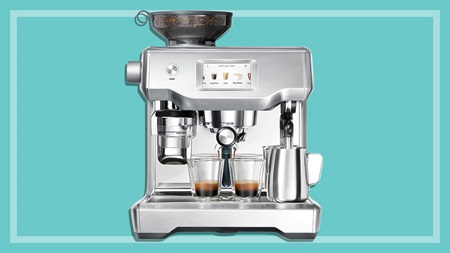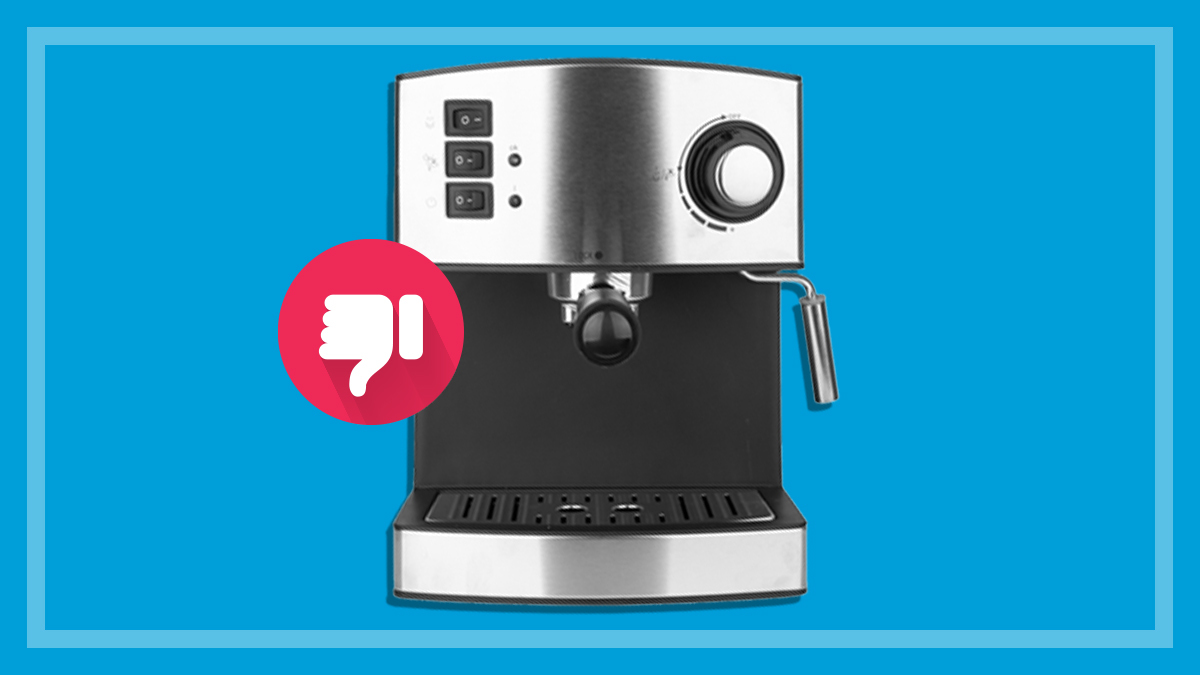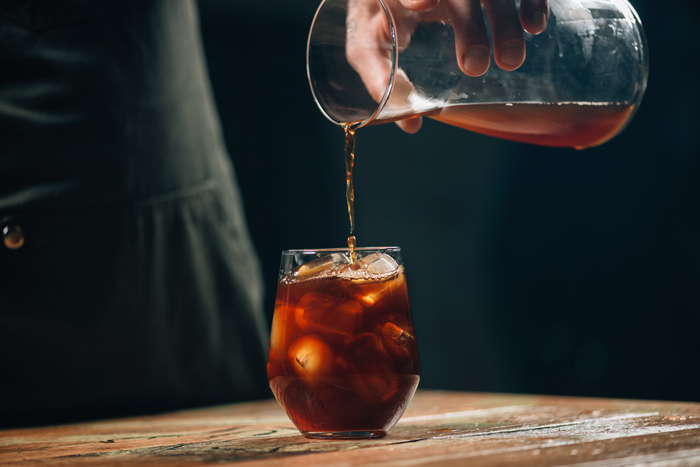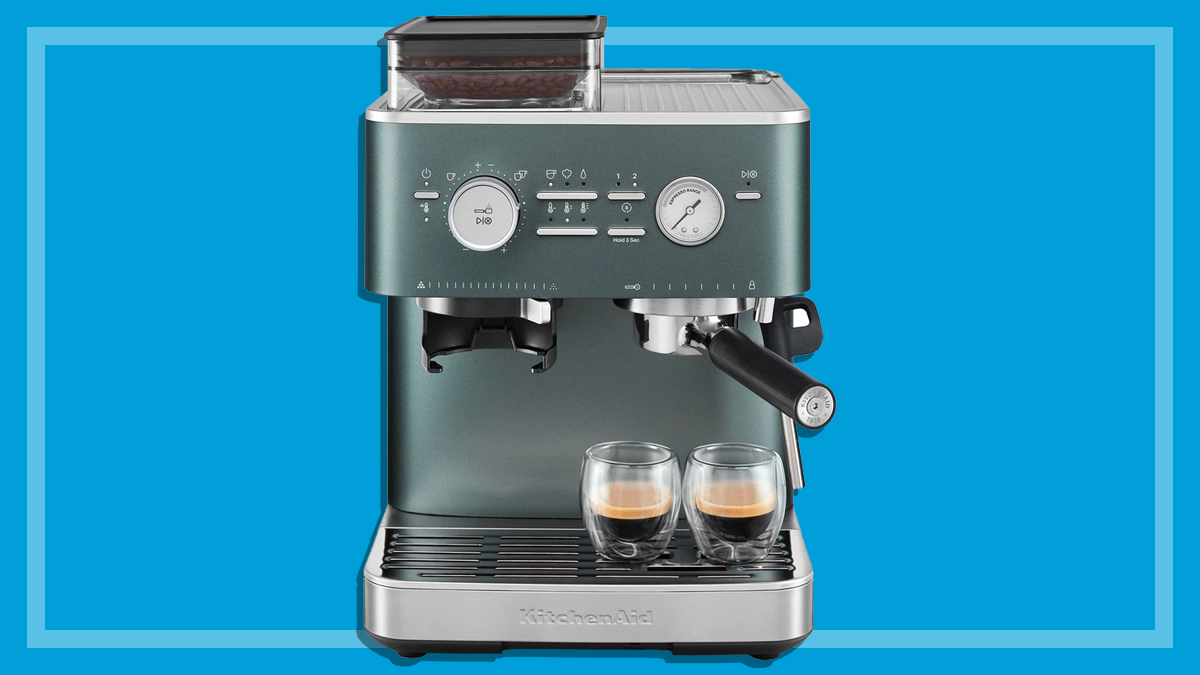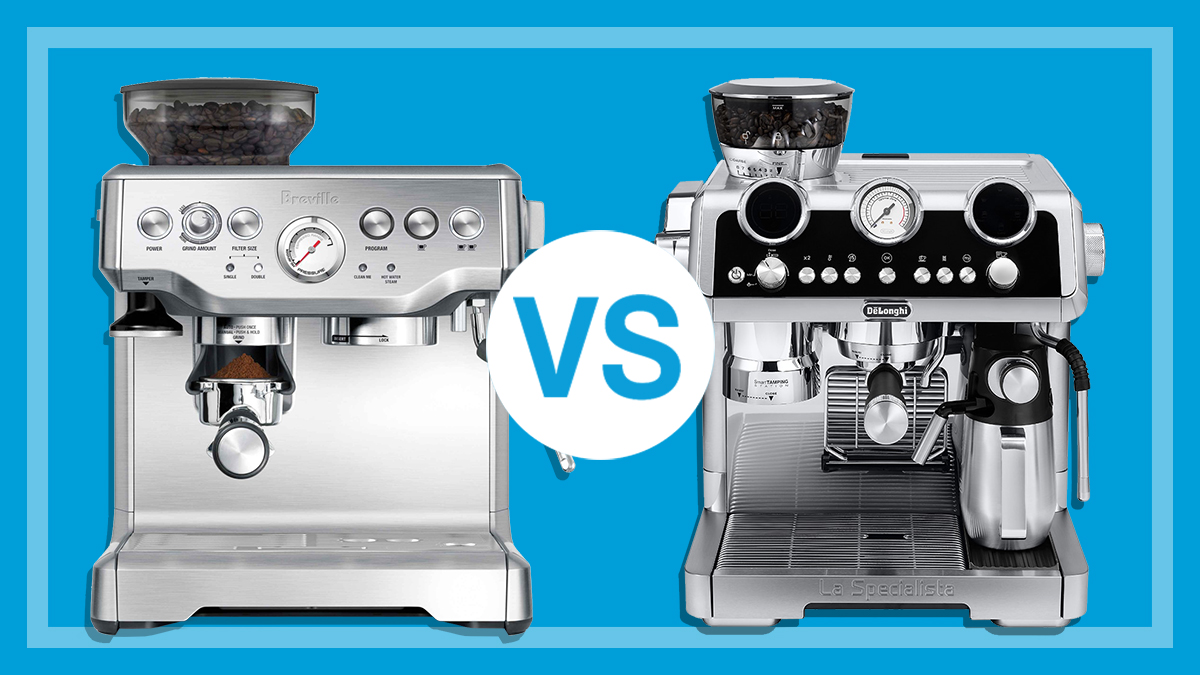Get our independent lab tests, expert reviews and honest advice.
11 common coffee machine mistakes
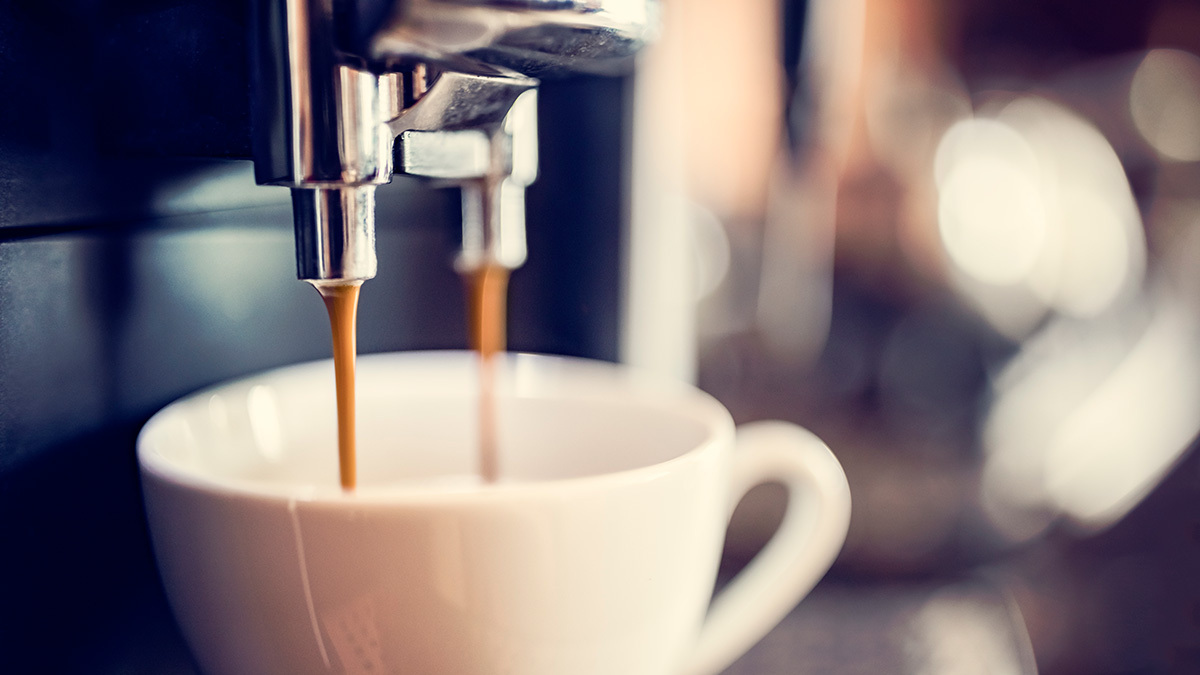
Nothing sets the world right like a barista-quality coffee in the morning.
If the thought of that first latte of the day is what motivates you to extract yourself from bed, no doubt you already have an espresso or pod machine sitting atop your kitchen bench. (If you don’t, you may want to consider our espresso machine reviews.)
Making the perfect coffee can be a supremely technical endeavour, but there are a few little tricks of the trade that’ll ensure you’re getting the best from your bean and your machine.
Take a look at these common mistakes and see if you can fine-tune your home brew.
1. Buying bad beans
Beans are the most logical place to start for troubleshooting your cuppa.
As with any ingredient, fresh is always best. There is a whole world of nuance when it comes to coffee beans, from the variety of beans and their flavour profiles, blends vs single-origin, and the roast level, but the two main things to remember are:
- buy your beans as close to their roast date as possible (at least within two weeks), and
- you do get what you pay for.
So, if you’re buying cheap supermarket beans, you’re likely getting a stale cup of coffee. If there’s no roast date on the bag, there’s a fair chance the beans are well past their best. Speciality coffee brands, on the other hand, are usually fresher and better quality.
2. Storing your beans incorrectly
Right, you’ve bought your good beans, but how to store them?
Whatever you’ve been told, don’t put them in the fridge! Coffee beans are porous, so they can take on odours from your fridge, especially those rather robust ones such as onion and garlic. They also just lose a bit of their oomph when cooled and frozen.
Coffee beans are porous, so they can take on odours from your fridge
And many experts don’t recommend freezing coffee, according to the US National Coffee Association. If you do freeze your coffee, make sure you use a truly airtight container and do so in small portions because, once you’ve taken your beans out of the freezer, it’s best not to put them back in again.
In home barista heaven, you would only buy enough beans to get you through a few days before purchasing fresh beans again, but that can be fairly inconvenient for everyday life so, unless you’re a true connoisseur, you can probably stretch things out a bit.
If your beans come in a foil bag with a valve, leave them there – they’ll be fine for up to two weeks. If your beans come in a paper bag, decant them into an airtight container and store them away from light.
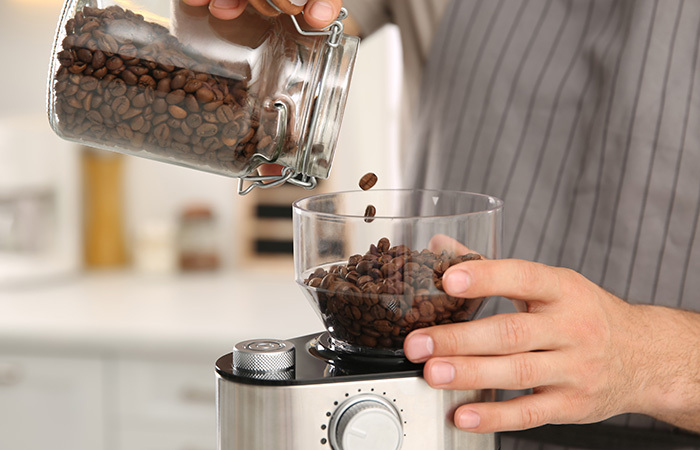
3. Going grinder-less
The gold standard when it comes to making coffee is to grind your beans as you use them. As soon as the bean is broken, it begins to oxidise, diminishing the rounded, lively flavour of the coffee.
If you’re currently using pre-ground beans and are frustrated with your flat-flavoured flat whites, it may be time to invest in a grinder.
Check out our coffee grinder reviews to find the best grinders.
4. Using the wrong grind size
The three golden rules for making espresso are “grind, dosage and time”, according to Anee Sampath, managing director of Samson Coffee House and a CHOICE expert.
You can buy the best beans in the world, but if your grind size is wrong, you’ll end up with a lacklustre coffee.
The three golden rules for making espresso are grind, dosage and time
Anee Sampath, managing director, Samson Coffee House
“Grind affects the rate of extraction, which brings out flavour and aroma compounds from your coffee beans,” says Anee. The finer the grind size, the slower the extraction.
Anee suggests aiming for 20–30 seconds to pull an espresso shot and using scales to weigh out 20g of coffee for 45g of espresso.
“Coffee should flow out of each spout evenly, as a dark liquid at first, followed by a ‘blonding’ or lightening of the flow as the crema forms. If your shot ends too quickly or runs beyond 30 seconds, adjust the grind for next time,” suggests Anee.
5. Uneven pressure when tamping
Another factor that affects a good extraction is the uneven distribution of weight when you tamp the coffee into the portafilter.
If the coffee is packed too tightly in some places and too loosely in another, the time it takes for the espresso to be extracted will vary as the water takes the path of least resistance.
Anee suggests aiming for an even pressure of 10–15kg body weight to ensure a flat and even surface.

6. Not using cold milk
If you just can’t seem to get that velvety milk with which to practice your latte art, it may be because you’re using room temperature milk.
Without embarking on a lecture about the molecular structure of milk, the fact is that to make lovely, frothy microfoam bubbles, you need the hot steam to hit cold milk, and preferably full-fat milk.
If you’re someone who likes their coffee almost too hot to handle, do also keep in mind that over-steaming the milk will not only affect the flavour of the milk but its nutritional value, too.
7. Buying the wrong pod machine
These days, you can find pod machines that make a very decent cup of coffee. But CHOICE expert Adrian Lini warns you should first evaluate whether you’re happy with a close-enough to barista-style coffee before you make a purchase, as there are far fewer options for customising your espresso.
“What you buy is what you get,” he says. “The machine will apply the same temperature of water, same volume of water, same filter design and pressure (depending on the pod) every single time.
“So if it doesn’t make good coffee with the pods it’s marketed for, it most likely can’t be adjusted to make good coffee.”
That’s why it’s so important to do your research before you buy. Check our coffee machine reviews to avoid condemning yourself to a lifetime of terrible coffee.
8. Not moving fast enough
Your pre-coffee self might take a while to get going, but once you’ve started the brewing process it’s important to keep moving.
One of the biggest missteps people make when extracting espresso is leaving the portafilter in the group head for longer than necessary before turning on the water pump.
This can burn the coffee grinds, leaving you with a bitter cup, so only put the portafilter in when you’re good to go, Adrian says.
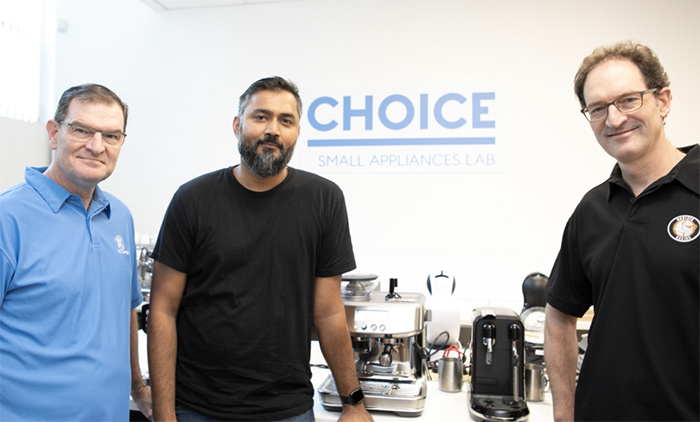
9. Not cleaning your machine
You’re going to be consuming the liquid that comes out of your coffee machine, so it follows that for reasons of health and flavour, it’s important to keep it clean.
Keeping your machine clean also means that it’ll stay happy for longer. You won’t need to have it maintained as frequently, and hopefully it’ll remain in service for longer.
Make sure you follow the manufacturer’s instructions for cleaning your machine.
10. Forgetting to flush
Because so much of pulling a good shot has to do with temperature, before you begin, make sure your machine has had a chance to warm up.
It’s also a great idea to lock the portafilter into the group head and flush through some water before you start. It’s a bit like waking your machine up by making sure everything is at the right temperature.
11. Winging it
It’s not imperative to be a bonafide barista to make your own coffee, but you can certainly up your game and pass as one with a little insider intel.
Rather than just figuring it out as you go, take a coffee-making class to pick up some tips and a little of the science that goes into a good espresso. Once you know the basics, you can experiment to craft your perfect cup.
As Anee Sampath says, “the best recipe is the one that suits your taste.”

